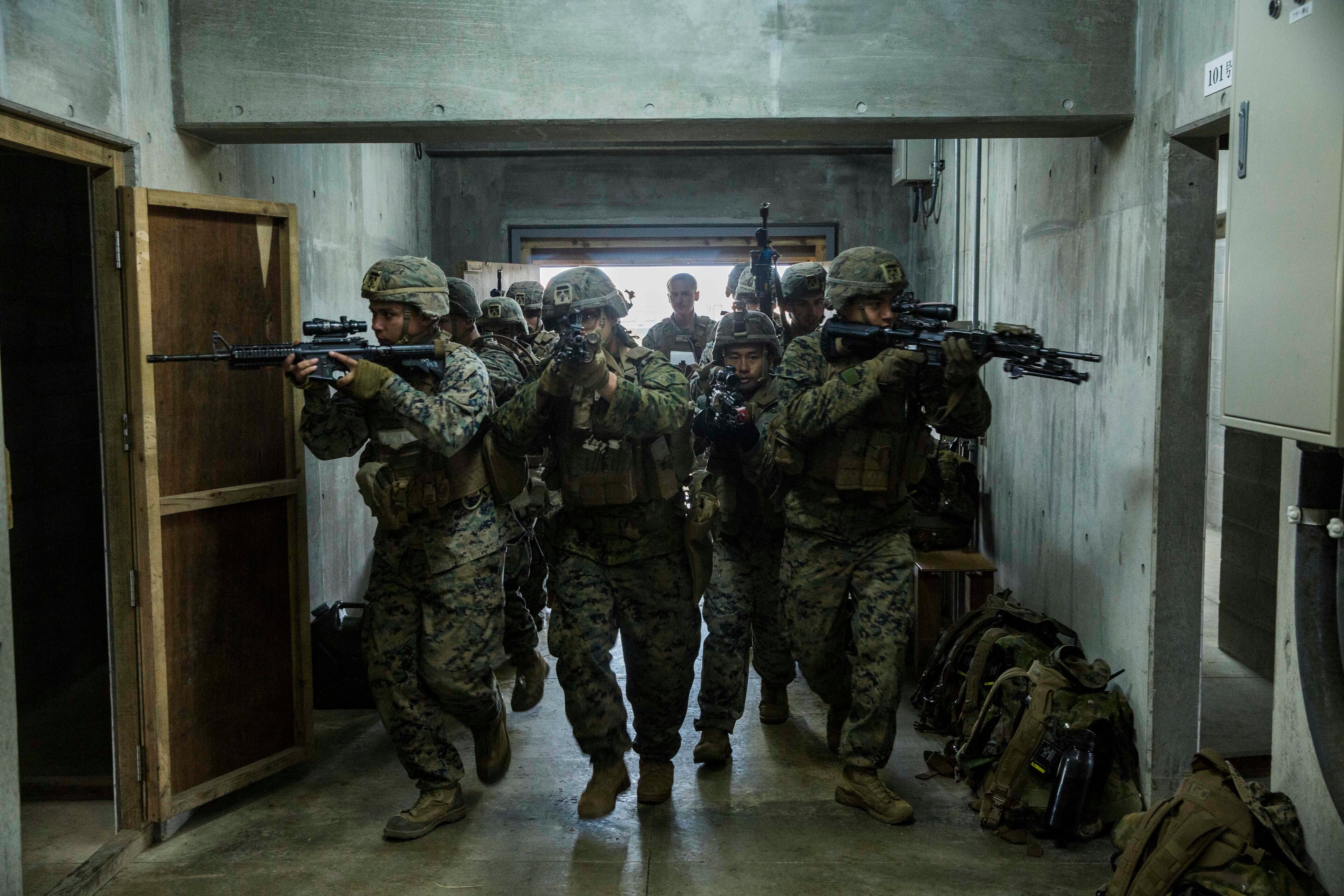Marine infantry and artillery experienced a bit of a role reversal in March while the 12th Marine Regiment conducted exercises putting to the test Marine Corps expeditionary advanced base operations.
The regiment, with units based out of Okinawa, Japan, and Hawaii, conducted two simultaneous exercises in March that put the artillery unit as the main focus with the infantry taking on a supporting role.
“Historically we had what’s called direct support ― artillery supported the infantry as they secured an objective,” Col. Michael Roach, commander of 12th Marines, told Marine Corps Times. “In this case we were the supported force, so in both exercises an infantry unit was attached to the artillery unit, so that’s a change. We had artillery officers as mission commanders for infantry forces.”
The role reversal is part of the Marine Corps’ plan to prepare for a littoral fight against a near-peer competitor.
RELATED

The plan, pushed by Marine Corps Commandant Gen. David Berger since he took over the Corps in 2019, will see a smaller, lighter, more maneuverable Marine Corps, armed with heavier long-range weapons, acting as a skirmish line dispersed through the littorals of the future battlefield.
Through long-range fires, electronic warfare and maybe even submarine-hunting the Marines would clear the way for the Navy to launch its campaign and help deliver a knockout blow with the rest of the joint force.
The new strategy de-emphasizes the infantry while putting the priority on whatever the Navy needs from the Marine Corps to complete its mission.
Often those needs will be long-range fires capable of sinking enemy ships.
During the two exercises the regiment took and held key islands on both sides of the Pacific Ocean where a mix of HIMARS and traditional M777 cannons deployed in support of the Navy’s mission.
“We are coming in with stealth, extending the reach of our long-range fires, and working on our ability to sustain that as long as the maritime force needs us to control an access point to the sea lines of communication,” Lt. Col. Roe Lemons, commander of 3rd Battalion, 12th Marine Regiment, said in a press release about the exercises.
On the island of le Shima, Japan, Marines from 3rd Reconnaissance Battalion (headquartered on Okinawa, Japan) alongside Army and Air Force special forces units conducted a quick raid that secured the enemy airfield.
The elite troops conducted a freefall out the back of Marine Corps MV-22B Ospreys under the cover of darkness.
Once on the island and the notional enemy was neutralized the force surveyed and secured an airfield that soon saw Marine F-35Bs from Fighter Attack Squadron 121 land.
Soon after the F-35Bs showed up, Ospreys and CH-53E Super Stallions dropped over Marines from 3rd Battalion, 8th Marines, on the island to set up the defense for an expeditionary advanced base where 12th Marines’ artillery set up to provide fires for the Navy, a press release about the exercises said.
“This event illustrated how Special Operations Forces capabilities can support the rapid deployment of 3d Marine Division’s long-range precision fires platforms into austere or remote locations,” Army Lt. Col. Erik Davis said in the release.
The special forces were not the only units to aid the exercises.
Soldiers and airmen from Army’s I Corps Multi-Domain Task Force, 25th Infantry Division, 1st Air Defense Artillery Regiment and 8th Theater Sustainment Command, were all involved, a press release said.
Even the Space Force took part in the joint exercises, the release said.
Eventually firing positions were set up in both Hawaii and Okinawa, Japan, with ultimate command and control of both exercises coming from the headquarters element of 12th Marines in Japan.
“It was a truly distributed, I would say distributed oceanic operation,” Roach said.
Once the artillery positions were in place the symbiotic relationship between the Marine Corps and Navy really began to shine, with the Corps using sensors on Navy ships to help spot targets, giving the Marines the opportunity to hit targets they normally would never even see.
“Having those multiple sensors that we can access for greater situational awareness will help compress our decision cycle, which is going to be the key to success in any future battlefield,” Roach said.
During the two exercises the artillery regiment took a close look at how to sustain an expeditionary advanced base long term.
In a traditional ground campaign Marines can rely on ground transportation to meet their logistical needs, a task the Marine Corps is more than capable of handling itself.
“One of the things that we see limitations, but we also see opportunity, is how do you sustain a force that’s on an island that is harder to reach,” Roach said.
In these exercises the artillery unit was able to work more directly with the logistics and air wing side of the Marine Corps to supply the bases, Roach said.
While the exercises were ambitious in scale, it was only one of the unit’s first steps in testing its capabilities and training to the new concept.
For future exercises Roach would like 12th Marines to work with regional allies in dispersed operations, while incorporating more unscripted force on force elements.





